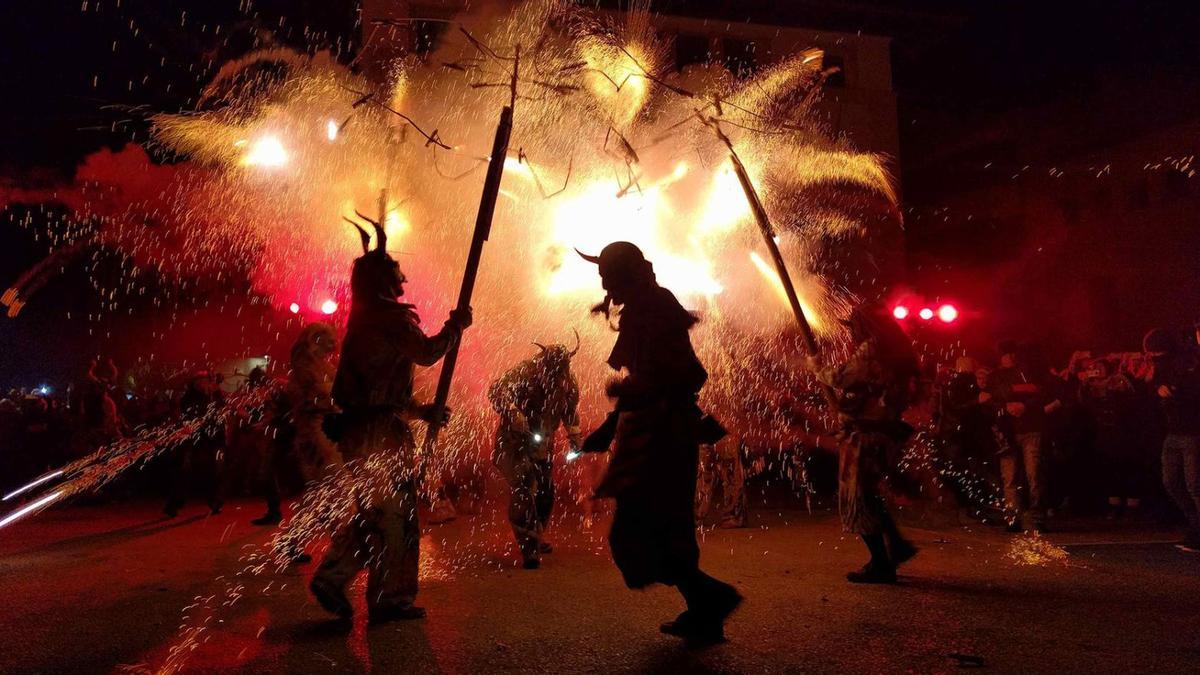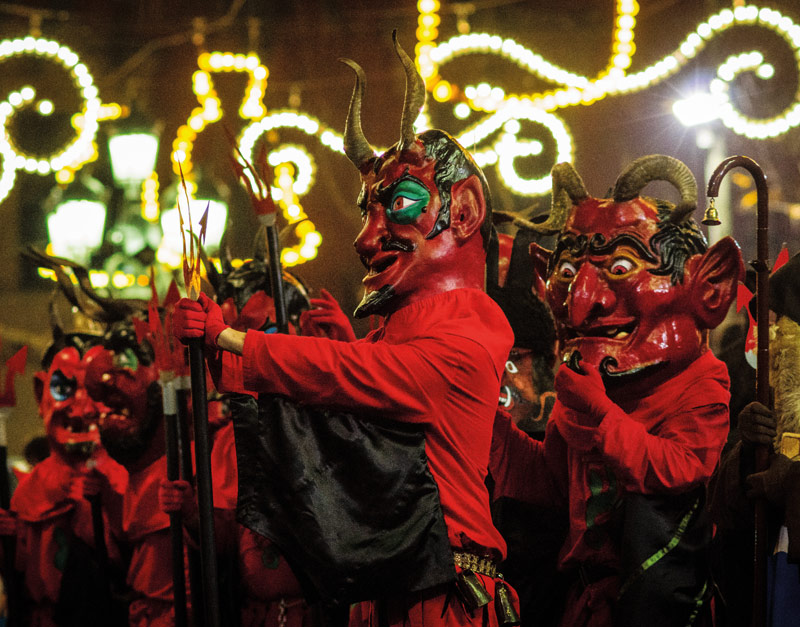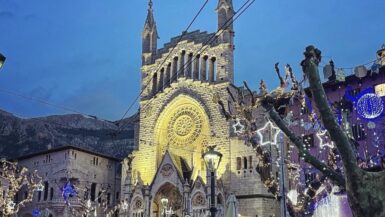One of the most important events in the popular calendar of the Balearic Islands are the festivities of Sant Antoni, which are celebrated on 16 and 17 January, and with special force in Sa Pobla, Manacor, Artà, Pollença, Muro and Palma, in Mallorca, where this saint has been worshipped since 1230. He is also the patron saint of the Palma neighbourhood of Son Ferriol and, since 1981, of Ciutadella, in Menorca. In Ibiza, it is celebrated only in Sant Antoni de Portmany.
In fact, there are two Sant Antoni in the calendar, the one on 17 January and the one on 13 June, the one in Padua. The first is known as the Sant Antoni of the donkeys and the second, as that of the apricots. But here, in the Islands, it has always been celebrated in January. This is one of the magical festivals of the Mallorcan calendar, it recalls the temptations that this saint suffered in the desert and connects with the ancient fertility rites.
This saint is so deeply rooted in Mallorcan folklore that in most families there was at least one Antoni or Antonia. On this day, people prepare food, sweets and drinks and invite family and friends. This festival has its own gastronomy, in which meat, sausages, spinach and cakes are the protagonists.
Before, each village celebrated its festival only with the residents of the village, but today there is more mobility and people from different parts of the island celebrate Sant Antoni, invited by friends and acquaintances. The most characteristic elements of this celebration are the demons, the bonfires, the blessed, the complete and the glosses.

THE COMPLETES
The Compline prayers are the last prayer that priests pray before going to bed. In this prayer the life of St. Anthony is read and his joys are sung. In the 70s, small groups of people went to mass to listen to the Compline and did so in an act full of solemnity. Nowadays, the mass has changed a lot, the churches are filled with people and the complete ones have a more festive than liturgical aspect.
At the beginning of the 80s, the priest Mateu Galmès from Artan recovered the festivities of Sant Antoni, in Manacor. In those years, the children of the schools of Manacor learned the traditional songs from the hand of this priest, which were later collected in a book.

FIRE AND BONFIRES
Fire, smoke and slime are part of these festivities. Bonfires represent the victory of light over darkness and fire is part of the primitive rituals of worship of the sun. The tradition is that bars, restaurants and private homes set up their own bonfires and that the neighbors go to toast the sausages, sausages, chops and sausages that have been made for slaughter.
In Sa Pobla, the tradition of bonfires is deeply rooted and there are groups that organize the festival. It is also a tradition for demons to bounce and somersault over the fire.
In Manacor and Sa Pobla, when they came out of completes, the first bonfire was lit and the party lasted until dawn. Figures of Saint Anthony and other characters in different situations were also placed on top of the bonfires.

GASTRONOMY
The bonfires are one of the main elements of this festival, where there is never a shortage of sausages to toast, most of which have been made for slaughter. Sausages, chulles, botifarrons and loin are usually the favorites. In Sa Pobla, espinagades, vegetable cakes, are traditional, especially with cabbage, meat or fish (loin or muslin) and are usually a little spicy.
THE GLOSSES
They are one of the best-known elements of these festivals and are part of Mallorca’s popular cultural legacy. The lyrics are anonymous and have been preserved by oral tradition. Ximbombers and glosadors participate in the festival and everyone improvises gloses with different tunes. Glosador fights are also common and can last until very early in the morning.
The glosses recall the deeds of the venerated saint, although the most successful are those of a spicy nature. There is no shortage of social or political criticism either; mayors, rectors and politicians are usually the ones who receive the most. Freedom reigns and if a song that is a little offensive comes out, people try not to get angry and respond with another, more poignant gloss.
THE DEMONS
Demons are the main protagonists of the verbenas of Saint Anthony and represent the temptations that mortify Saint Anthony. They are figures that frighten children and sometimes they go with barns or sticks to make them even more scary. In Manacor, the big demon and two small demons dance around Sant Antoni. The dances, accompanied by the groups of the xeremiers, last all day and last until dawn. There are also master craftsmen who are in charge of making the devils’ carrots, made with paper pulp and authentic animal horns.

THE WORKERS
The workers arose in all the parishes of Mallorca and one of their most important missions was to maintain devotion to a saint, such as that of Sant Antoni, as well as the organization of the festival. In the past, in medieval times, there were different workers and each one had their own position: that of the luminaire, that of captes, of bessiner, etc.
Workers have undergone many changes in the last 800 years. One of the most remarkable was in 2012, in the Sa Pobla worker’s office, when the first women workers joined. Until then, there had only been working men, a figure that was maintained by hereditary tradition.
THE BLESSED
Saint Anthony the Abbot is considered the patron saint of round-footed animals (horses, donkeys, donkeys) and, according to legend, the saint healed wounded animals. For this reason, it is a tradition that on January 17 the village priest goes out into the street and blesses the animals while invoking the protection of the saint. Initially, for the feast of Sant Antoni, the blessed ones were more important than the bonfires, but over time the preferences have been reversed a little.
In Artà, there is a parade in the morning in which floats parade and the representation of the temptations of the saint. This tour of the village with the demons is called the capta. It starts from the worker who carries the trui and collects money from the people who want to donate it. The crowd then gathers in the square, along with demons and xeremiers, and there the animals are blessed. At the end of the parade, with the demons outside the church, the solemn service is celebrated: the sermon, the prayers to the saint, the dance of the offering and the singing of “Lo elogi”. After the service, the “Argument” is sung, a gloss that reviews the events that took place in the town during the previous year.






Leave a reply